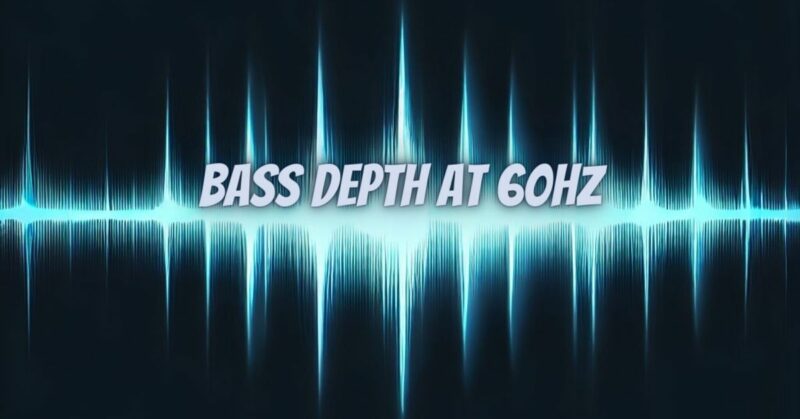In the realm of audio, the lower frequencies are often revered for their ability to create a profound and immersive listening experience. Among these frequencies, the 60Hz range holds a unique place, offering a sweet spot where power and clarity converge. In this article, we will delve into the world of bass depth at 60Hz, examining its significance, impact on music, and the technology behind its reproduction.
The Significance of 60Hz Bass Depth
Bass depth at 60Hz is part of the sub-bass spectrum, characterized by frequencies ranging from 20Hz to 60Hz. Within this range, 60Hz stands out as a crucial pivot point, providing a balance between the raw power of sub-bass and the musicality of audible frequencies. Here’s why it’s significant:
- Balanced Presence: At 60Hz, bass frequencies begin to take on a more audible character while retaining their physical impact. This balance allows for the creation of basslines that are not only felt but also heard distinctly, adding depth and dimension to the music.
- Musical Versatility: 60Hz bass depth finds its place in a wide array of musical genres, from rock and pop to electronic dance music (EDM) and hip-hop. Its versatility allows producers to shape the emotional tone of a composition, making it equally effective in delivering driving rhythms or evoking a sense of melancholy.
- Physical Resonance: The vibrations created by 60Hz bass can be felt physically, whether at a live concert or through a high-quality sound system. This tactile element enhances the immersive quality of the listening experience, making the music not just auditory but also visceral.
Impact on Music Production
- Speaker and Subwoofer Design: To accurately reproduce 60Hz bass depth, audio equipment must be carefully designed to handle this specific frequency range. High-quality subwoofers and speaker systems are equipped to deliver clean and impactful 60Hz bass without distortion.
- Equalization (EQ): Sound engineers use EQ techniques to shape the 60Hz bass frequencies, ensuring that they complement the rest of the mix. Proper EQ allows for a well-defined and balanced low-end presence.
- Mixing and Arrangement: Musicians and producers often use the 60Hz range strategically in their compositions. Basslines, kick drums, and other foundational elements are meticulously arranged to harness the power and musicality of this frequency range.
- Compression and Limiting: Compression and limiting are applied to control the dynamic range of 60Hz bass, ensuring that it remains consistent and impactful without causing audio distortion.
Bass depth at 60Hz occupies a pivotal position in the world of audio, where raw power and musicality converge. It adds a layer of resonance, depth, and emotional impact to music that transcends mere sound. Whether it’s the driving basslines in a rock anthem, the pulsating beats of EDM, or the heart-thumping rhythms of hip-hop, 60Hz bass depth is a cornerstone of modern music production. As technology continues to advance, our appreciation for the significance of this frequency range will only deepen, reaffirming its enduring role in shaping the sonic landscapes of tomorrow.


